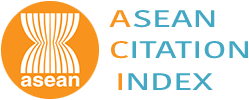Effects of Core Strength Training Using Stable Versus Unstable Surfaces on Lower Body Quality in 8th Grade Male and Female Students in a Junior High School in Bandung
Abstract
Objective: To investigate the effects of core strength training performed on stable (CSTS) compared to unstable surfaces (CSTU) on physical fitness in school-aged boys and girls.
Methods: In this study, 72 (36 males, 36 females) untrained healthy subjects (mean age: 14±1 years, age range: 13–15 years) were randomly assigned to a CSTS group for stable surface (n = 36; 18 males and 18 females) or a CSTU group for unstable surface (n = 36; 18 males and 18 females). Core strength training performed on stable as compared to unstable surfaces were assessed on pre- and post-tests. Training period lasted 6 weeks (2 sessions/week). The components of physical fitness were assessed using standing long jump test, stand-and-reach test, 20-m sprint test, jumping sideway test, and y balance test.
Results: This study showed significant results in increased components of physical fitness in both CSTS and CSTU groups (p<0.05). The increase of physical fitness for CSTU was better than CSTS (p<0.05). There were differences of physical fitness between gender in both groups (p<0.05) except for stand-and-reach test (p>0.05).
Conclusion: Core strength training performed on unstable and stable surfaces increases all components of physical fitness in youths. Core strength training performed on unstable surface can better improve the physical fitness compared to the stable surface. There were differences of physical fitness between gender in both groups except for stand-and-reach test.
Keywords: Resistance training, physical fitness, gender
DOI: 10.15850/ijihs.v6n1.1050
Keywords
Full Text:
PDFReferences
Klentrou P. Influence of exercise and training on critical stages of bone growth and development. Pediatr Exerc Sci. 2016;28(2):178–86.
Chahar PS. Physiological basis of growth and development among children and adolescent in relation to physical activity. Am J Sports Sci Med. 2014;2(5):17–22.
Peltzer K, Pengpid S. Leisure time physical inactivity and sedentary behaviour and lifestyle correlates among students aged 13–15 in the Association of Southeast Asian Nations (ASEAN) member states, 2007–2013. Int J Environ Res Public Health. 2016;13(2):217–8.
Granacher U, Schellbach J, Klein K, Prieske O, Baeyens JP, Muehlbauer T. Effects of core strength training using stable versus unstable surfaces on physical fitness in adolescents: a randomized controlled trial. BMC Sports Sci Med Rehabil. 2014;6(1):40–1.
Akuthota V, Ferreiro A, Moore T, Fredericson M. Core stability exercise principles. Curr Sports Med Rep. 2008;7(1):39–44.
Kibler WB, Press J, Sciascia A. The role of core stability in athletic function. Sports Med. 2006;36(3):189–98.
Nesser TW, Huxel KC, Tincher JL, Okada T: The relationship between core stability and performance in division I football players. J Strength Cond Res. 2008;22(6):1750–4.
Okada T, Huxel KC, Nesser TW. Relationship between core stability, functional movement, and performance. J Strength Cond Res. 2011;25(1):252–61.
Allen BA, Hannon JC, Burns RD, Williams SM. Effect of a core conditioning intervention on tests of trunk muscular endurance in school-aged children. J Strength Cond Res. 2014;28(7):2063–70.
Behm DG, Colado JC, Sanchez JC. Instability resistance training across the exercise continuum. Sports Health. 2013;5(6):500–3.
Granacher U, Lacroix A, Muehlbauer T, Roettger K, Gollhofer A. Effects of core instability strength training on trunk muscle strength, spinal mobility, dynamic balance and functional mobility in older adults. Gerontology. 2013;59(2):105–13.
Behm DG, Muehlbauer T, Kibele A, Granacher U. Effects of strength training using unstable surfaces on strength, power and balance performance across the lifespan: a systematic review and meta-analysis. Sports Med. 2015;45(10):1645–69.
Anderson KG, Behm DG: Maintenance of EMG activity and loss of force output with instability. J Strength Cond Res. 2004;18(3):637–40.
Filipa A, Byrnes R, Paterno MV, Myer GD, Hewett TE. Neuromuscular training improves performance on the star excursion balance test in young female athletes. J Orthop Sports Phys Ther. 2010;40(9):551–8.
Hoshikawa Y, Lida T, Muramatsu M, Ii N, Nakajima Y, Chumank K, et al. Effects of stabilization training of trunk muscularity and physical performance in youth soccer players. J Strength Cond Res. 2013,27;(11)3142–9.
Konin JG, Beil N, Werner G. Facilitating the serape effect to enhance extremity force production. Athlet Ther Today. 2003;8(2):54–6.
Young JL, Herring SA, Press JM, Casazza BA. The influence of the spine on the shoulder in the throwing athlete. J Back Musculosceletal Rehabil. 1996;7(1):5–17.
Granacher U, Schellbach J, Klein K, Prieske O, Baeyens JP, Muehlbauer T. Effects of core strength training using stable versus unstable surfaces on physical fitness in adolescents: a randomized controlled trial. BMC Sports Sci Med Rehabil. [serial on the internet]. 2014 Nov [cited 2017 Jan 22];6(40):[about 11p.]. Available from: https://www.ncbi.nlm.nih.gov/pmc/articles/PMC4290805/.
Cressey EM, West CA, Tiberio DP, Kraemer WJ, Maresh CM. The effects of ten weeks of lower body unstable surface training on markers of athletic performance. J Strength Cond Res. 2007;21(2):561–7.
Seryozha G, Zivkovic V, Velickovska LA, Naumovski M. First normative reference of standing long jump indicates gender difference in lower muscular strength of Macedonian school children. Health. 2014;6(1):99–106.
DOI: https://doi.org/10.15850/ijihs.v6n1.1050
Article Metrics
Abstract view : 1244 timesPDF - 483 times
This Journal indexed by

IJIHS is licensed under a Creative Commons Attribution-NonCommercial 4.0 International License
View My Stats




